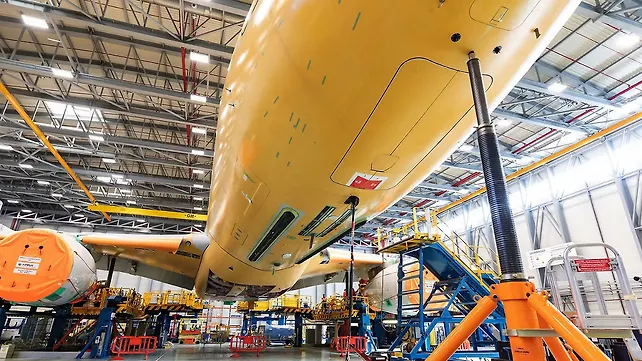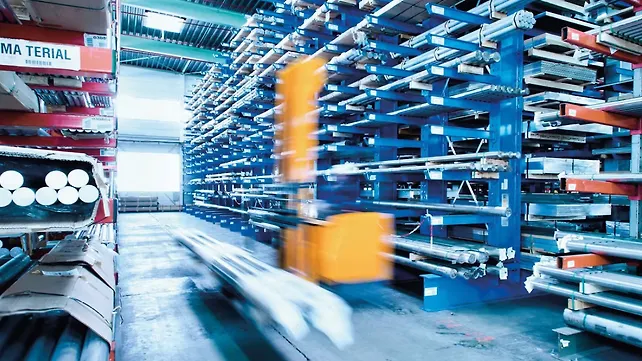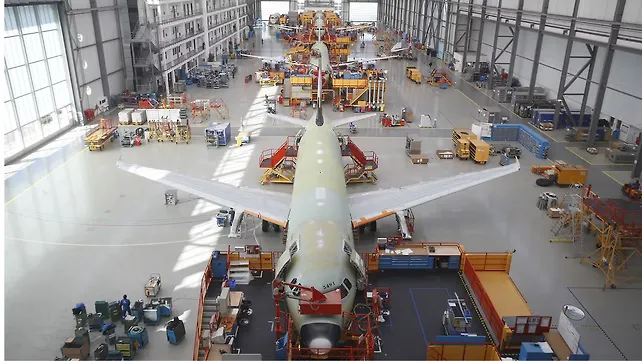
Just a year ago, in the month of April, the spread of the COVID-19 pandemic had a calamitous effect on the global commercial aviation industry, with domestic flights worldwide dropping by 70%. The disruption threw the aerospace industry out of gear, with aircraft orders plummeting by almost 60% in 2020. With the COVID-19 pandemic yet to be brought under control, current air travel is not expected to return to pre-crisis levels until 2023; however, air traffic is still expected to double over the next 20 years.
Domino Effect
For the global aerospace supply chain, the challenge remains catering for depressed demand in the near term while also being ready to ramp up supply at short notice when demand comes roaring back. This is easier said than done as the global aerospace supply chain today is highly diversified with 50%-60% by value of an aerospace system representing supplier-created parts and content.

Ramping up production for the aerospace supply chain is always challenging as it calls for new infrastructure to be added and then licensed before the required parts/components can be manufactured. Aviation suppliers not only have to guarantee extremely high quality standards with regular inspections but also demonstrate the ability and willingness to invest in technology developments continuously.
The highly specialised and complex component requirements and strict aerospace safety norms mean that airframers, Original Equipment Manufacturers (OEM) and Maintenance, Repair and Overhaul (MRO) firms are often dependent on only a few suppliers for specific product groups. This not only makes it challenging to increase the production rate but also puts a large number of aerospace supply chain suppliers at risk when disruptive events occur.
Digital or Bust
According to Patrick Marous, Global CEO thyssenkrupp Aerospace, Aerospace & Defence (A&D), companies in this domain have traditionally lagged behind other industries in adopting digital technologies owing to long development cycles, an older workforce, and other factors. In a global survey on the use of Industry 4.0 technologies across manufacturing industries, it was found that only 25% of A&D companies surveyed were using these technologies.

It is indeed surprising that companies that have been leaders in innovation in decades past, using advanced technologies such as composites, stealth and Computer Aided Design (CAD), have been caught on the wrong foot when it comes to implementation of analytics, automation, cloud services, and the Internet-of-Things (IoT). As a result, greater adoption of digital technologies will be critical for the A&D supply chain, providing it with the flexibility and cost reductions needed to guard against future disruptions.
Follow the Leader
While the automotive industry has been at the forefront of adopting new-age digital technologies for various use cases, the aerospace industry has lagged behind. However, the pace of cross leveraging digital solutions to the aviation industry from the auto sector is now gathering pace. In fact, the A&D industry has been borrowing innovative manufacturing techniques from the automotive industry for several years.

A particularly successful implementation has been the automotive industry’s outsourcing of supply chains to Third Party Logistics (3PL) vendors. While this has been going for over a decade, its implementation in the A&D industry has been slow. “This is surprising, considering that it is clearly a partnership that works—approximately 90% of clients said that their partnerships had been successful and that the use of 3PL services, including warehousing, transport, and fulfilment, contributed to improving their service quality to end customers,” Marous says.
Outsourcing supply chain management could prove of vital importance to the A&D supply chain due to the resultant benefits of increased operational flexibility and adaptability, asset reduction, reduced cycle times and improved responsiveness. The reduction in stockpiling and increased inventory turnover also delivers benefits in improved financial performance, greater efficiency in operations, and waste elimination.